Reefing on a Budget

Reef aquariums can be very expensive. But they don’t have to be. Here is a simple guide to reefing on a budget.
Quality over Quantity
We recommend you start with a budget. Then determine the largest tank you can afford, without cutting corners, to meet that budget. You will be happier with the most amazing 3-gallon tank on the planet than a 300-gallon tank that is constantly in need of repair and filled with algae and dead fish.
The pictured tank is a beautiful 7.13-gallon AquaTop Tank with a
Kessil A160WE Tuna Blue Light,
FijiCube 600 Overflow Box,
IceCap 15 Reef Sump,
Tunze DOC 9001 Skimmer, and
Rossmont Riser R850 Return Pump. All this equipment is top-of-the-line. But because the tank is small, we didn't break the bank putting it together. If it were a 100-gallon tank with top-of-the-line equipment, that would be a very different story.
Those who get a bigger tank than they can afford usually end up cutting corners and regretting it later. You might buy $200 light only to buy a $400 light a year later because you weren’t happy with the cheap one. If the high quality light is too expensive, you probably chose too big of a tank.
Buying Used
It is common to find used aquariums and equipment for sale on Craig’s List or at the local aquarium club. Buying used is often a good way to save money. When buying used, keep in mind that nothing lasts forever. If you purchase a glass tank that was used for six months you may get another 15 years out of it. If the tank is 17 years old, then the silicone may be giving out.
In general, glass tanks last 15-20 years. Most equipment is expected to have a failure within about twice the warranty period. If you buy a skimmer that has a one-year warranty, you should expect something to fail by year two. The failure may be a cheap impeller or it could be a pump that costs $100. Some equipment comes with a five-year warranty, and it is not uncommon for these items to last 10-15 years, though you may need to make some repairs during that period (
ballast, impeller, pumps, etc.).
Because you can extend the life of equipment with affordable parts, try to pick used equipment with parts availability and consider replacing some things preemptively. For example, if you buy a used UV sterilizer, it is a good idea to replace the lamp and gaskets before putting it into service.
Keep It Simple
Part of keeping things affordable is only purchasing what you need. While there are many, many products you might buy that will enhance your reef setup, there are just four critical major components:
1.
Lighting
2.
Water Movement (pumps and powerheads)
3. Filtration (
protein skimmer or
filter)
4.
Supplementation (calcium, buffer & trace elements)
Before you purchase an aquarium controller, UV sterilizer, or auto top-off, make sure you have the basics covered. All of these items will make your life easier and increase your chance of success, but most people will be happier with higher quality basic equipment and going without all of the bells and whistles.
Further reading: “What Is Absolutely Needed For A Reef Aquarium—The 20 Products You Definitely Need”
Get Your Priorities Straight
It’s tempting to put money into features rather than performance. When you buy a light it is more important the light provide proper nutrition for your corals rather than a fun phone app.
Here are some simple suggestions on ways to save.
1. Buying T5 lighting or LED lighting that doesn’t need a controller
2. Buying pumps that don’t have power supplies that can fail
3. Buying skimmers with more affordable, longer-lasting AC pumps
4. Buying pump and light controllers that are wired, preventing problems with WiFi and Bluetooth
Be Smart
Aquariums can fail for a number of reasons. Failure can result in dead fish and coral and this can be very expensive. Here are some tips to avoid failure.
1. Prepare for a power outage. Read: “
Preparing Your Aquarium For A Power Outage”.
2. Use two smaller
heaters instead of one. Heater failure can be catastrophic, but with two heaters this is less likely.
3. Always have two pumps. Better two small pumps than one large pump. All pumps will eventually fail. Having two will keep the aquarium running when one fails.
4. Only buy fish from the most reputable sellers. A sick fish can kill all the fish in your aquarium.
Be Economical
1. Buy larger quantities of additives. It’s cheaper in the long run.
2. Think long-term. High-quality LED lights and pumps might have a high upfront cost, but they may save hundreds of dollars in electricity bills over the life of the product because they're energy efficient.
3. Make your own RO water.
Go Slow
Being impatient will cost you in the long run. You will waste money on fish and coral that will not survive because your aquarium is not set up properly. Over the years we have spoken with hundreds of aquarists who have bought everything for their aquarium online and had their coral, rock, and fish delivered a day or two after the aquarium arrived. Do not even think about adding a coral until your tank is cycled. Adding a coral before your aquarium is ready is a recipe for failure. For assistance in cycling an aquarium please watch the “
How To Cycle A BioCube Aquarium” video. Although the video focuses on the BioCube, the principles apply to all aquariums.
Not really understanding your equipment will be costly in the long run. We’ve spoken with hundreds of customers who bought a protein skimmer and decided after two days that the skimmer was defective because there isn’t a lot of gunk in the collection cup. Misconceptions about how protein skimmers are supposed to work are so common we wrote the following article on the subject: “
Is Your Protein Skimmer Working Properly? A Skimmer Adjustment Primer”.
To have a budget reef tank you must be patient. If you are not patient, you will fail and your investment will largely be wasted. It’s a guarantee. Successful budget reef tanks all have one thing in common: a patient aquarist.







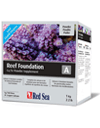
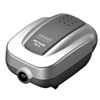


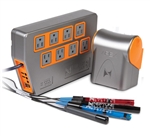

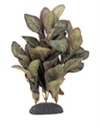

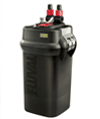

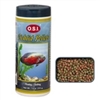





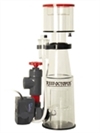




 Reef aquariums can be very expensive. But they don’t have to be. Here is a simple guide to reefing on a budget.
Reef aquariums can be very expensive. But they don’t have to be. Here is a simple guide to reefing on a budget.